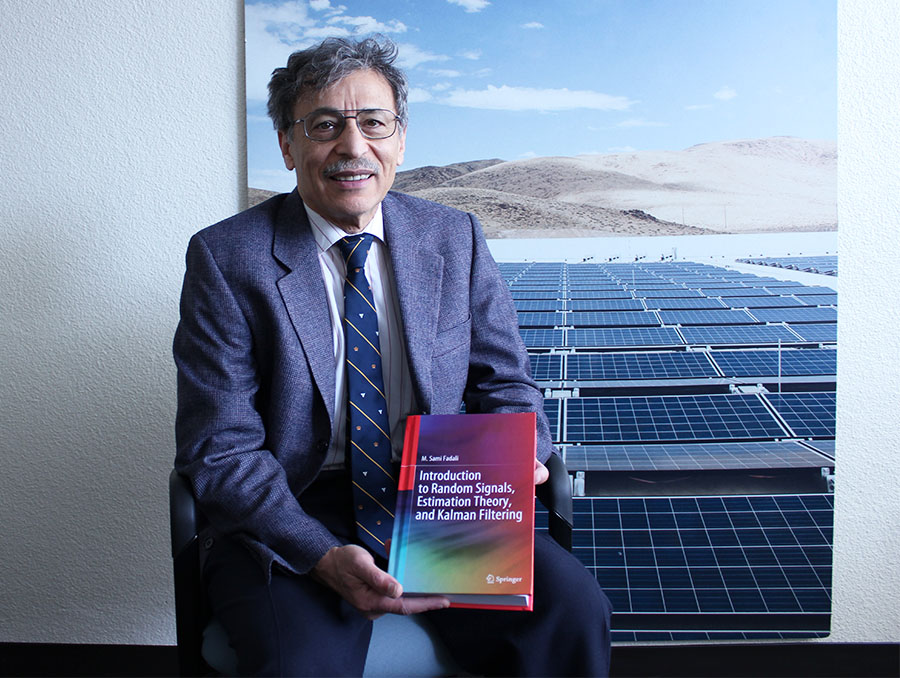During the COVID pandemic, while most of us spent our time in lockdown baking bread and creating dance memes, Electrical Engineering Professor Sami Fadali was writing a textbook.
“Introduction to Random Signals, Estimation Theory, and Kalman Filtering,” designed for first-year graduate students and practicing engineers, provides an introduction to random signals — signals whose values vary unpredictably over time and space — and estimation theory. The recently published book also addresses the Kalman Filter, an estimator used for tracking the state of a dynamic system by repeatedly updating estimates based on new measurements and predictions.
Fadali, who also is chair of the Electrical & Biomedical Engineering Department, said he tailored the textbook to graduate-level electrical engineering courses at the University of Nevada, Reno, after he was unable to find a single textbook that met class needs.
“There were chapters in several texts that were appropriate for the course, but no single text contained all the material that I wished to cover,” Fadali wrote in the book’s preface, “and more critically, the material was at a level that is accessible to a student with an undergraduate engineering degree.”
Additionally, Fadali noted that many of the textbooks were written before the development of MATLAB, a software platform used for numerical analysis, data analysis and visualization. He also wanted to cover basic statistical properties of estimators, which he considers foundational to understanding estimators.
The understanding of random signals and estimation can impact us in many areas, including healthcare, communication, transportation, energy efficiency and environmental monitoring.
Fadali is the sole author of “Random Signals.” It is his second textbook: his first, “Digital Control Engineering: Analysis and Design,” co-authored with Antonio Visioli, published in 2009 and has been translated into Persian and Chinese. The book is now in its third edition.















